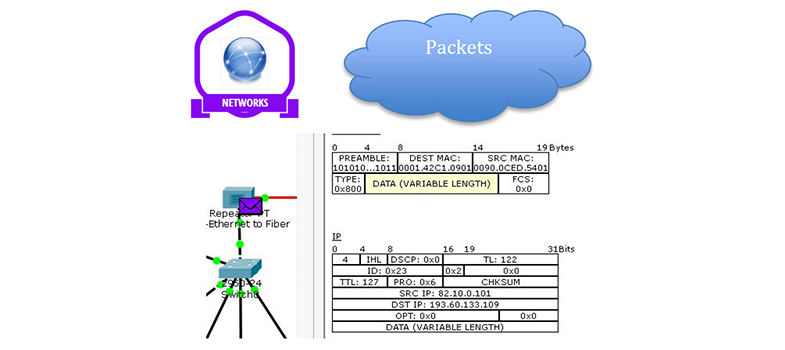2 Network addressing
- When a ‘message’ such as a file, image or video is transmitted across a network, it is first broken down into small blocks called segments. These are placed into containers called packets, typically by the Internet Protocol (IP). There are two versions of IP: version 4 and version 6.
- IP is responsible for delivering the packets from source to destination, and regardless of the version being used, packets must use some form of addressing to uniquely identify the message source and message destination.
- This is very similar to the way that you address a letter that you send through the post. When you send a letter, you normally write the address of the recipient (destination) on the front and your own address (source) on the back.
- IP includes other information within the packets, including its size, and some information about the type of data that the packet contains (e.g. webpage, email).
- The information added to the data to create the packet is called the IP header. The process of adding the IP header to the data is called ‘encapsulation’.
- Encapsulation is a complex term used to describe a simple technical process. Think of presents you may be given for your birthday – they are encapsulated in wrapping paper. So, encapsulation is the thin, additional layer of information used to wrap around data when it is sent between computers.
- Continuing the birthday present analogy, many of you may have sometime in the past played pass the parcel – a children’s game involving a present that has many layers of wrapping. Similarly, networking has many layers of wrapping, or encapsulation, which are each used to help in the reliable transmission of data.

Figure 2
Back to previous pagePrevious
1 Network communication
